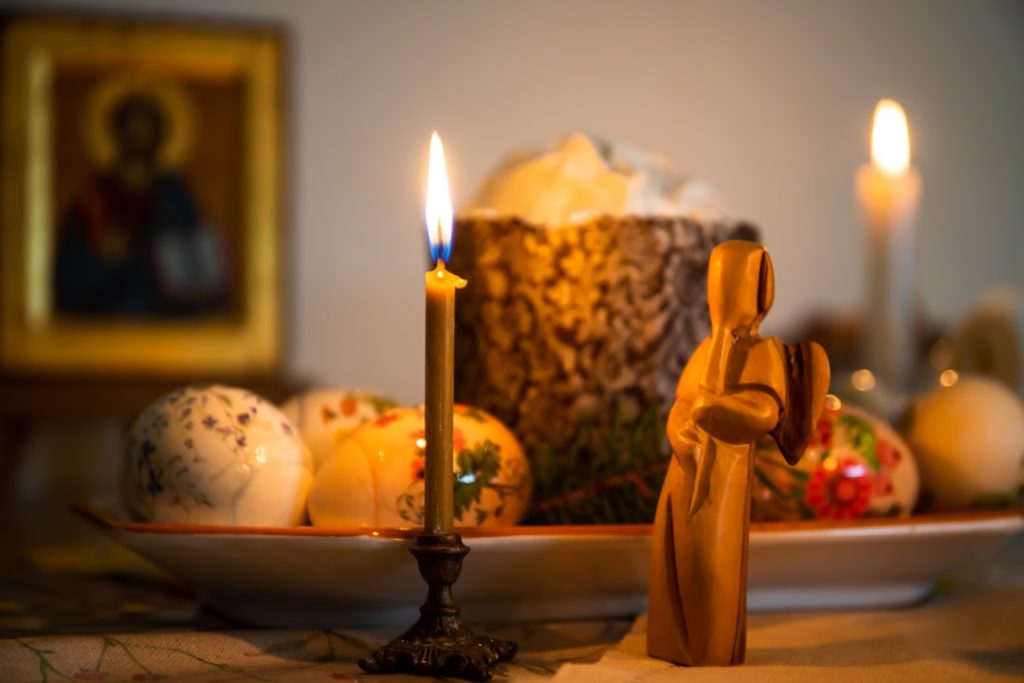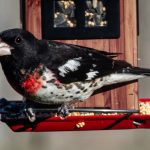Chickens have specific requirements for cold weather care to maintain their health and well-being. While generally hardy, chickens are susceptible to cold weather effects and require extra attention during winter months. Chickens are more sensitive to drafts and dampness than to low temperatures alone.
Providing adequate shelter, bedding, and insulation is crucial for their comfort and safety in winter. Proper housing protects chickens from harsh elements and helps maintain a stable environment. Insulation in the coop helps retain heat, while ventilation prevents moisture buildup.
Dry, clean bedding is essential for warmth and hygiene. Chickens need constant access to fresh, unfrozen water in cold weather. Their diet may need adjustments, as they require more energy to maintain body temperature.
Increased calorie intake, particularly from grains and fats, can help chickens stay warm. Frostbite prevention is important, especially for breeds with large combs and wattles. Applying petroleum jelly to these areas can offer protection.
Monitoring chickens for signs of cold stress, such as huddling or reduced activity, is crucial. By addressing these specific needs, chicken owners can ensure their flock remains healthy and comfortable throughout the winter season.
Table of Contents
- 1 Providing proper shelter and bedding for chickens
- 2 Using heat lamps and other heating sources
- 3 Insulating the chicken coop
- 4 Ensuring adequate ventilation while keeping chickens warm
- 5 Providing additional food and water during cold weather
- 6 Monitoring the health and behavior of chickens in cold weather
- 7 FAQs
- 7.1 What are the best ways to keep chickens warm in cold weather?
- 7.2 What temperature is too cold for chickens?
- 7.3 How can I insulate my chicken coop to keep it warm?
- 7.4 Are there any specific breeds of chickens that are better suited for cold weather?
- 7.5 What should I feed my chickens to help keep them warm in cold weather?
Key Takeaways
- Chickens need extra care in cold weather to stay healthy and comfortable
- Proper shelter and bedding are essential for keeping chickens warm and dry
- Heat lamps and other heating sources can help maintain a comfortable temperature in the coop
- Insulating the chicken coop can help retain heat and keep out drafts
- Adequate ventilation is important for preventing moisture buildup and maintaining air quality
- Providing extra food and water can help chickens maintain their energy and stay hydrated in cold weather
- Regularly monitoring the health and behavior of chickens is crucial for identifying and addressing any cold weather-related issues
Providing proper shelter and bedding for chickens
Designing the Perfect Coop
The chicken coop should be well-ventilated but protected from drafts, with a solid roof and walls to keep out wind and moisture. The coop should also be raised off the ground to prevent dampness from seeping in.
Bedding Essentials
Inside the coop, provide plenty of clean, dry bedding such as straw or wood shavings for the chickens to nestle in. This will help them stay warm and dry, as well as provide insulation from the cold ground.
Maintaining a Cozy Environment
Additionally, make sure the coop is free from any leaks or drafts that could let in cold air or moisture. By providing proper shelter and bedding, you can help your chickens stay warm and comfortable throughout the winter.
Using heat lamps and other heating sources

In extremely cold temperatures, it may be necessary to provide additional heat sources for your chickens. Heat lamps can be used to provide warmth inside the coop, but it’s important to use them with caution to prevent fires or injuries. Make sure the heat lamp is securely attached and positioned away from any flammable materials or areas where the chickens could come into contact with it.
Additionally, consider using heated waterers to prevent the water from freezing, as chickens need access to fresh water at all times. Another option is to use heated perches, which can help keep your chickens’ feet warm during the night. However, it’s important to monitor these heating sources closely to ensure they are functioning properly and not posing any safety risks to your flock.
In extremely cold temperatures, it may be necessary to provide additional heat sources for your chickens. Heat lamps can be used to provide warmth inside the coop, but it’s important to use them with caution to prevent fires or injuries. Make sure the heat lamp is securely attached and positioned away from any flammable materials or areas where the chickens could come into contact with it.
Additionally, consider using heated waterers to prevent the water from freezing, as chickens need access to fresh water at all times. Another option is to use heated perches, which can help keep your chickens’ feet warm during the night. However, it’s important to monitor these heating sources closely to ensure they are functioning properly and not posing any safety risks to your flock.
Insulating the chicken coop
Insulating the chicken coop is an effective way to help retain heat and keep your flock warm during cold weather. Insulation can be added to the walls, ceiling, and floor of the coop to help trap heat inside. Common insulation materials include foam board, fiberglass batts, or even recycled denim insulation.
It’s important to seal any gaps or cracks in the coop before adding insulation to prevent drafts and moisture from entering. Additionally, consider using a thick layer of bedding on the floor of the coop for added insulation. By insulating the chicken coop, you can help maintain a comfortable temperature for your flock throughout the winter.
Insulating the chicken coop is an effective way to help retain heat and keep your flock warm during cold weather. Insulation can be added to the walls, ceiling, and floor of the coop to help trap heat inside. Common insulation materials include foam board, fiberglass batts, or even recycled denim insulation.
It’s important to seal any gaps or cracks in the coop before adding insulation to prevent drafts and moisture from entering. Additionally, consider using a thick layer of bedding on the floor of the coop for added insulation. By insulating the chicken coop, you can help maintain a comfortable temperature for your flock throughout the winter.
Ensuring adequate ventilation while keeping chickens warm
While it’s important to keep your chickens warm during cold weather, it’s equally important to ensure that the coop has adequate ventilation. Proper ventilation helps remove excess moisture and ammonia from the air, which can build up in a confined space and lead to respiratory issues for your flock. Ventilation also helps regulate temperature and prevent condensation from forming inside the coop.
To ensure adequate ventilation, consider installing vents near the roof of the coop that can be opened or closed as needed. Additionally, avoid sealing up all cracks and openings in the coop completely, as this can lead to poor air quality and humidity levels inside. By balancing warmth with ventilation, you can create a healthy environment for your chickens during the winter months.
While it’s important to keep your chickens warm during cold weather, it’s equally important to ensure that the coop has adequate ventilation. Proper ventilation helps remove excess moisture and ammonia from the air, which can build up in a confined space and lead to respiratory issues for your flock. Ventilation also helps regulate temperature and prevent condensation from forming inside the coop.
To ensure adequate ventilation, consider installing vents near the roof of the coop that can be opened or closed as needed. Additionally, avoid sealing up all cracks and openings in the coop completely, as this can lead to poor air quality and humidity levels inside. By balancing warmth with ventilation, you can create a healthy environment for your chickens during the winter months.
Providing additional food and water during cold weather

Providing Adequate Nutrition
As temperatures drop, chickens burn more calories to stay warm, so it’s essential to provide them with a high-quality feed that is rich in nutrients and energy. Consider supplementing their diet with grains such as corn or oats, which can help generate heat as they are digested.
Ensuring Access to Fresh Water
Make sure your chickens have access to fresh water at all times by using heated waterers or regularly checking for frozen water sources. Dehydration can be a serious issue in cold weather, so it’s crucial to ensure that your flock has access to clean water throughout the winter.
Preventing Dehydration
Dehydration can be a serious issue in cold weather, so it’s crucial to ensure that your flock has access to clean water throughout the winter. Regularly check the water sources to ensure they are not frozen, and consider using heated waterers to keep the water from freezing.
Monitoring the health and behavior of chickens in cold weather
During cold weather, it’s important to monitor the health and behavior of your chickens closely for any signs of distress or illness. Keep an eye out for symptoms such as lethargy, decreased appetite, pale combs or wattles, or signs of respiratory issues such as coughing or sneezing. Additionally, observe how your chickens are behaving – if they are huddling together for warmth or showing signs of discomfort such as shivering or fluffing up their feathers excessively, it may indicate that they are too cold.
By monitoring their health and behavior regularly, you can quickly identify any issues and take appropriate action to ensure the well-being of your flock. During cold weather, it’s important to monitor the health and behavior of your chickens closely for any signs of distress or illness. Keep an eye out for symptoms such as lethargy, decreased appetite, pale combs or wattles, or signs of respiratory issues such as coughing or sneezing.
Additionally, observe how your chickens are behaving – if they are huddling together for warmth or showing signs of discomfort such as shivering or fluffing up their feathers excessively, it may indicate that they are too cold. By monitoring their health and behavior regularly, you can quickly identify any issues and take appropriate action to ensure the well-being of your flock. In conclusion, understanding the needs of chickens in cold weather is essential for providing proper care and ensuring their health and well-being throughout the winter months.
By providing proper shelter and bedding, using heating sources cautiously, insulating the coop effectively, ensuring adequate ventilation while keeping chickens warm, providing additional food and water, and monitoring their health and behavior closely, you can create a comfortable environment for your flock during cold weather. With these measures in place, you can help your chickens stay healthy and happy even when temperatures drop outside.
If you’re looking for tips on how to keep your chickens warm during the winter, check out this helpful article on how to insulate a chicken coop. It provides great advice on how to ensure your feathered friends stay cozy and comfortable during the colder months.
FAQs
What are the best ways to keep chickens warm in cold weather?
Some of the best ways to keep chickens warm in cold weather include providing a well-insulated coop, using heat lamps or heaters, providing extra bedding, and ensuring good ventilation without drafts.
What temperature is too cold for chickens?
Chickens can generally tolerate cold temperatures as long as they have a dry and draft-free coop. However, temperatures below 0°F (-18°C) can be dangerous for chickens, especially if they are not acclimated to such extreme cold.
How can I insulate my chicken coop to keep it warm?
You can insulate your chicken coop by adding extra insulation to the walls, ceiling, and floor. This can be done using materials such as foam board, straw bales, or recycled denim insulation. It’s important to ensure that the insulation does not create a fire hazard and that there is still adequate ventilation.
Are there any specific breeds of chickens that are better suited for cold weather?
Some chicken breeds are better suited for cold weather than others. Breeds such as the Plymouth Rock, Orpington, and Wyandotte are known for their cold-hardiness and ability to withstand colder temperatures.
What should I feed my chickens to help keep them warm in cold weather?
Feeding your chickens a balanced diet that includes high-quality protein and plenty of calories can help them generate body heat to stay warm in cold weather. Additionally, providing warm water and occasional treats such as scratch grains can also help keep them warm.
Meet Walter, the feathered-friend fanatic of Florida! Nestled in the sunshine state, Walter struts through life with his feathered companions, clucking his way to happiness. With a coop that’s fancier than a five-star hotel, he’s the Don Juan of the chicken world. When he’s not teaching his hens to do the cha-cha, you’ll find him in a heated debate with his prized rooster, Sir Clucks-a-Lot. Walter’s poultry passion is no yolk; he’s the sunny-side-up guy you never knew you needed in your flock of friends!







